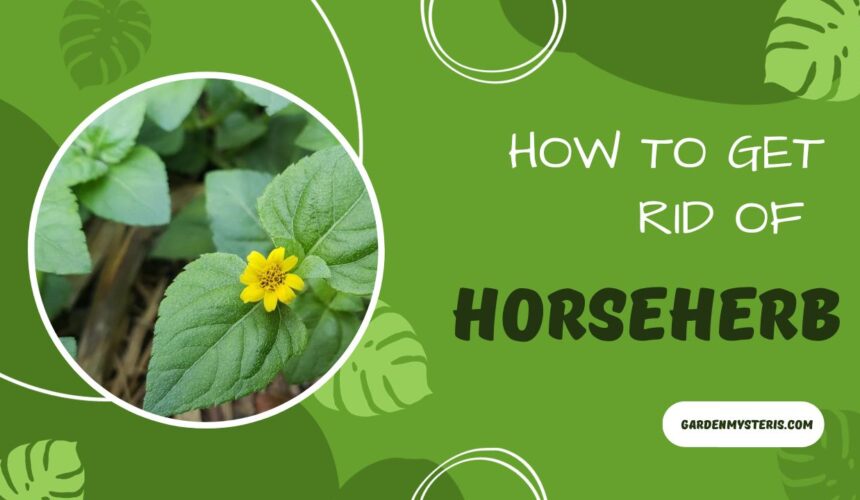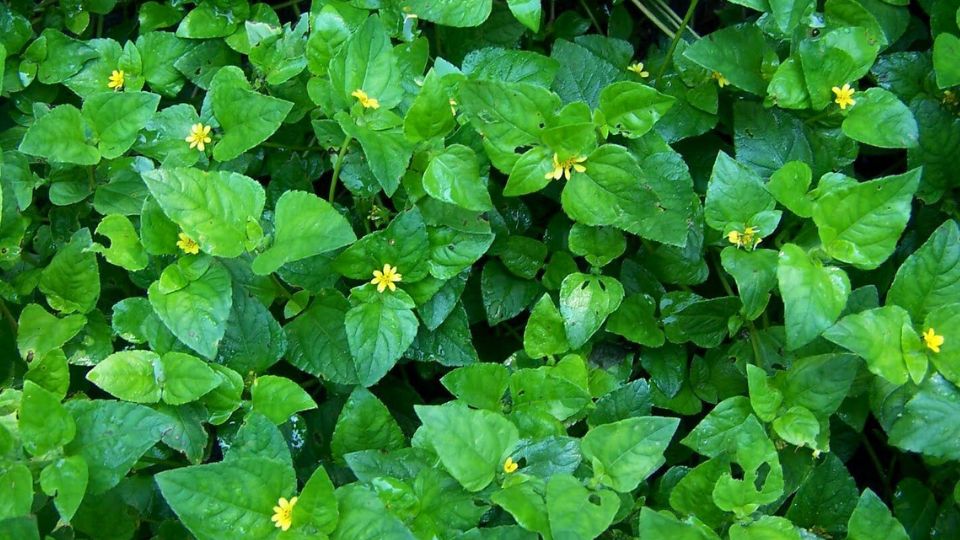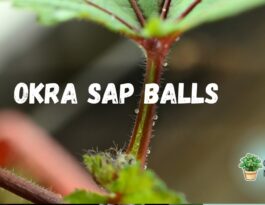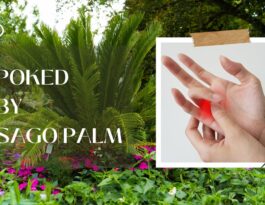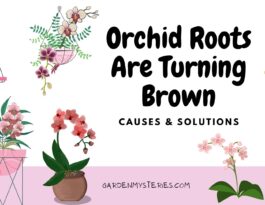Are you here in search of an answer for how to get rid of horseherb? There are plenty of ways including boiling water, vinegar, herbicides, polarization, and more.
In this article, we have covered all your inquiries regarding the matter, so keep reading.
What Is Horseherb?
Horseherb (Calyptocarpus vialis) is a low-growing perennial plant that belongs to the Asteraceae family. It is native to parts of North, Central, and South America. Horseherb is often found in lawns, gardens, and landscapes, where it can spread rapidly and form a dense ground cover. It has small, bright green leaves and produces yellow flowers.
Is Horserherb Weed Dangerous for Potted Plants?
Horseherb (Calyptocarpus vialis) can be hazardous for potted plants, competing for vital resources like water, nutrients, and sunlight, hindering growth and health. Its dense growth disrupts root systems, leading to damage and nutrient uptake issues.
This invasive weed reduces the aesthetic appeal of potted plants and can cause drainage and root rot problems by obstructing proper drainage and ventilation. Eradication is challenging because of its resilient root system and fast regrowth.
To maintain plant health, promptly address infestations through hand pulling, mulching, or selective herbicides. Regular monitoring and proper care prevent horseherb from dominating potted plants.
Ways to Kill Horsehub Weed: At A Glance (Table)
Here’s a table summarizing various methods on what kills horseherb weed:
| Method | Description |
| Hand Pulling | Manual removal of the weed, roots included. |
| Mulching | Apply a thick layer of mulch to smother the weed. |
| Herbicides | Use selective herbicides to target horseherb. |
| Vinegar Solution | Spray a vinegar solution on the weed. |
| Boiling Water | Pour boiling water over the weed to kill it. |
| Solarization | Cover the affected area with plastic to trap heat and kill the weed. |
Each method on how to get rid of horseherb has its advantages and limitations. The most suitable approach depends on factors like the size of the infestation, the location of the weed, and your preferences for using chemical or non-chemical control methods.
Always follow safety guidelines and local regulations when using herbicides or other chemicals.
If you have time, how about checking a comprehensive guide on Best Homemade Fertilizer.
How to Get Rid of Horseherb?
Getting rid of horseherb can be challenging, but with the right approach and persistence, you can effectively control its growth. Here are steps you can take to get rid of horseherb:
Hand Pulling
For small infestations or isolated patches, carefully hand-pull the horseherb, making sure to remove the entire plant, including the roots. This method is most effective when the weed population is limited.
Mulching
Apply a thick layer of organic mulch (like wood chips or straw) around your plants to suppress horseherb growth. The mulch will block sunlight, hindering the weed’s ability to grow and spread.
Herbicides
If horseherb is widespread and difficult to control manually, consider using selective herbicides specifically designed to target broadleaf weeds like horseherb. Try out weed killer atrazine or similar if necessary. Follow the instructions on the herbicide label carefully to ensure safe and effective use.
Vinegar Solution
A natural alternative to herbicides is a vinegar solution. Mix white vinegar with water (with a higher concentration of vinegar) and spray it directly on the horseherb. Take care not to spray desirable plants, as vinegar can harm them too.
Boiling Water
Pour boiling water directly over the horseherb to scald and kill it. This method is best for small areas or when dealing with individual plants. Avoid pouring the water on desired plants.
Solarization
For larger areas with a severe infestation, you can use solarization to kill horseherb. Cover the affected area with clear plastic, securing the edges to trap heat. The heat buildup under the plastic will help kill the weed and its seeds.
Preventive Measures
To prevent horseherb from taking hold in the first place, practice good garden hygiene. Regularly inspect your garden for any signs of horseherb and remove it promptly. Also, use weed-free potting soil and inspect new plants before introducing them to your garden.
Healthy Garden Practices
Maintaining healthy plants will help them better compete with horseherb. Provide proper watering, fertilization, and appropriate sunlight for your plants to ensure their robust growth.
Remember that controlling horseherb may require a combination of methods and ongoing efforts. Patience and persistence are key to successfully getting rid of this weed and maintaining a healthy garden.
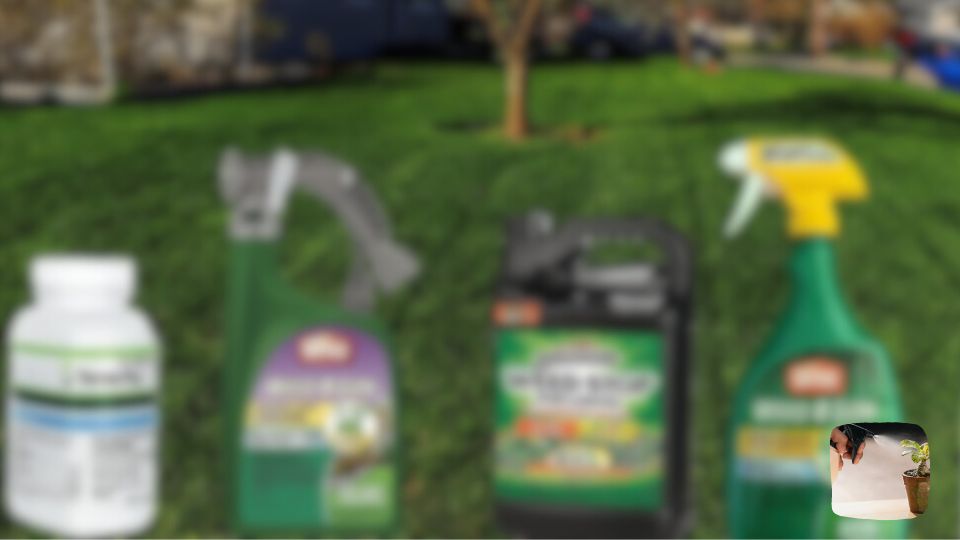
Tips to Prevent Horsehub from Potted Plants
Preventing horseherb from invading potted plants involves a combination of proactive measures. Here are some tips to help you keep horseherb at bay:
Step 1: Weed-Free Soil
Begin with clean, weed-free potting soil for your potted plants. Use high-quality soil that has been screened for weed seeds to reduce the chance of introducing horseherb into your pots.
Step 2: Inspect New Plants
Before introducing new plants into your potted arrangements, carefully inspect them for any signs of horseherb or other weeds. Remove any weeds you find before planting.
Step 3: Mulch the Surface
Apply a layer of organic mulch (like wood chips, straw, or shredded leaves) on the soil surface around your potted plants. Mulch acts as a barrier that prevents horseherb seeds from reaching the soil and germinating. It also helps to suppress weed growth and retain moisture.
Step 4: Regular Maintenance
Consistently monitor your potted plants for any signs of horseherb. As soon as you spot any, promptly remove the weeds by hand, ensuring you get rid of the entire plant, including the roots.
Step 5: Avoid Overwatering
Horseherb thrives in moist conditions, so be mindful not to overwater your potted plants. You should let the soil dry slightly between watering to discourage the growth of this weed.
Step 6: Prune and Trim
Regularly prune and trim your potted plants to maintain good air circulation. Adequate airflow will help prevent conditions that favor horseherb growth.
Step 7: Maintain Plant Health
Healthy, well-maintained plants are more resistant to weed invasions. Provide your potted plants with proper sunlight, nutrition, and care to promote their overall health and vigor.
Step 8: Use Weed Barrier Fabric
Consider placing weed barrier fabric or landscape fabric in the bottom of your pots before adding the soil. This barrier can help prevent weed seeds, including horseherb, from entering the pots through the drainage holes.
Step 9: Rotate Plants
If you notice horseherb becoming a recurring problem in specific pots, try rotating the plants to different locations. This can help break the weed’s life cycle and reduce its persistence.
Step 10: Be Diligent
Regularly inspect and tend to your potted plants to address any issues promptly. The earlier you detect and address horseherb infestations, the easier it will be to manage them.
By following these preventive measures and maintaining good garden practices, you can minimize the risk of horseherb invading your potted plants. Also, you will enjoy healthier, more vivid container gardens.
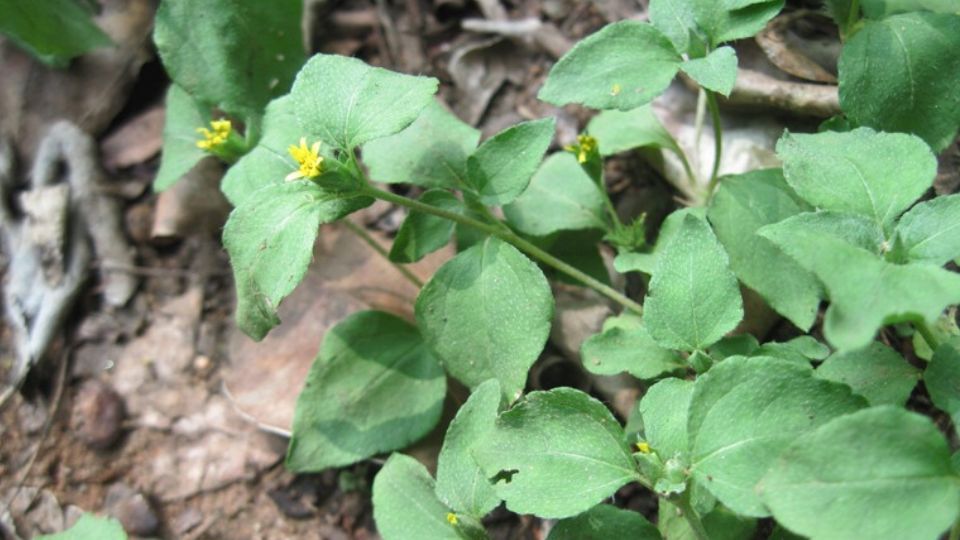
Honeysuckle Smell with Horseherb
Honeysuckle will still produce its characteristic fragrance, especially during its blooming period. The presence of horseherb should not affect the scent of honeysuckle. Honeysuckle perfumes will remain almost the same.
To maximize the success of growing honeysuckle in horseherb dominance, you should consider the following tips:
- You must choose a container that provides ample space and good drainage.
- Try to use a high-quality potting mix and consider adding slow-release fertilizer.
- You should monitor the plants regularly for signs of stress or competition.
- You must confirm the container receives appropriate sunlight. Typically partial to full sun, depending on the specific varieties of honeysuckle.
FAQs
Can I use vinegar to kill horseherb?
Yes, you can create a natural herbicidal solution using vinegar and water. Mix one part white vinegar with three parts water and spray it directly on the horseherb leaves. However, be cautious not to spray desirable plants, as vinegar can harm them too.
What is solarization, and how does it help control horseherb?
Solarization involves covering the affected area with clear plastic to trap heat. This heat buildup under the plastic helps kill horseherb and its seeds by raising the soil temperature. Leave the plastic in place for several weeks during the hottest months for effective results.
Are herbicides safe to use for eliminating horseherb?
Yes, selective herbicides designed for broadleaf weed control can effectively target horseherb without harming grass or desirable plants. Follow the herbicide’s instructions carefully, apply it only on the horseherb, and avoid using it on windy days to prevent drift.
You can also check out our point of view on Epsom Salt, Will Epsom Salt Kill Plants?

